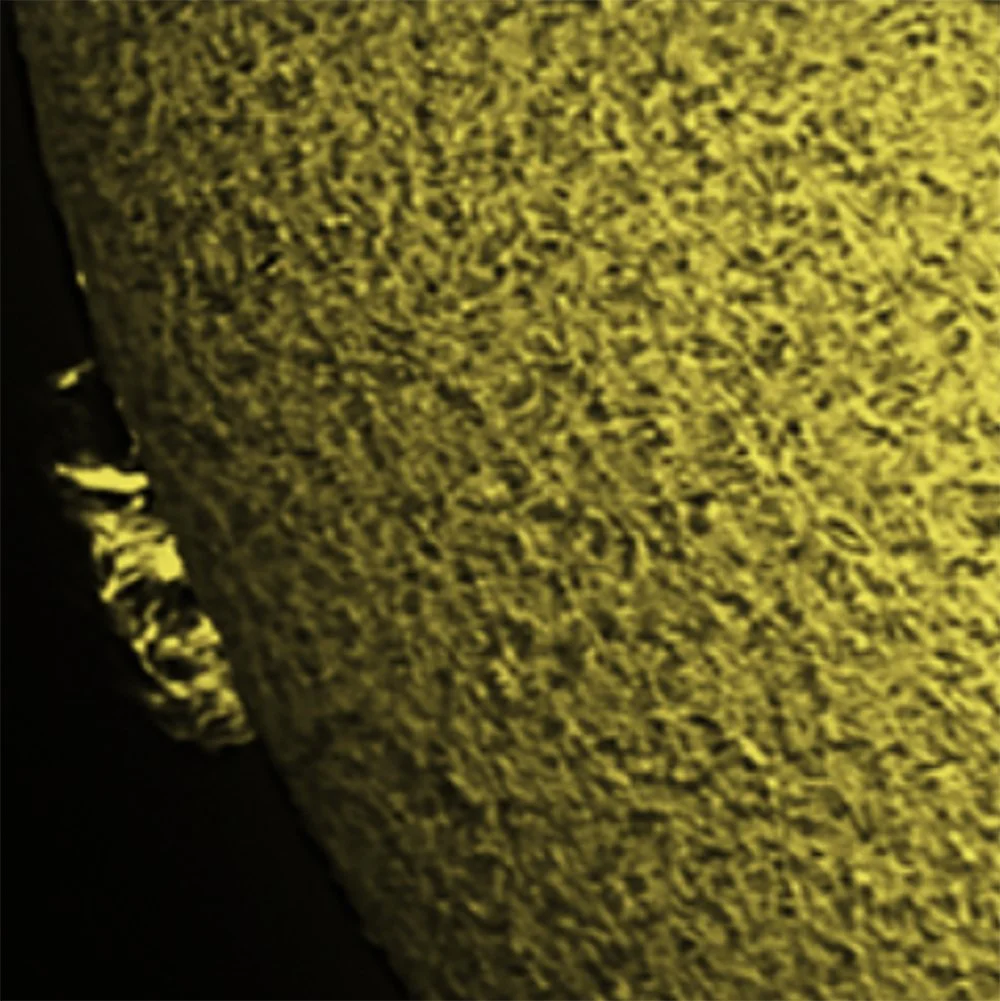ASTRONOMY | Solar Imaging
SOLAR IMAGING AT MUSK & ROBOTIC OBSERVATORIES:
During Crew 261’s mission the Musk Observatory was used for observing:
• The CHROMOSPHERE which is the “surface” of the Sun as viewed through hydrogen alpha.
• The PROMINENCES which are these gases shooting out into space when looking at the limb.
Decadi made 1000 frames of each in a video, then stacked the best images, processing them to bring out detail, and combining them into a single image.
ABOUT THE MDRS OBSERVATORIES: The MDRS Observatories include both the recently upgraded Musk Observatory and the brand new MDRS Robotic Observatory. These facilities have been made possible for the Mars Society by very generous donations over the period of many years. The Musk Foundation (of which Elon Musk is the primary benefactor) provided the initial funding to construct the Musk Observatory
The Musk Observatory at MDRS a solar facility equipped with a Lunt 100 mm refracting telescope and a double stack of hydrogen alpha filters. The observatory is specifically designed to look at the sun. It comes complete with a zoom eyepiece for visual observations, and a camera for solar imaging.
The MDRS Robotic Observatory a completely automated facility. The Crew Astronomer sets up the images he/she would like to photograph via the Internet at any time of the day or night and the telescope takes the images on the next clear evening for further processing. There are two telescopes in the observatory mounted tandem to each other. A large 14-inch, Celestron EdgeHD, Schmidt-Cassegrain reflector is used with standardized photometric filters for research work, and a small 70mm refractor, donated by David Fisherowski, for wide-angle astrophotography. The system is controlled through Skynet which robotically manages the software for telescopes worldwide. Skynet is made available through the University of North Carolina at Chapel Hill in exchange for a small percentage of telescope time which is donated to interested junior and high school students worldwide.
Robotic observatories are wide field instruments. This makes them great for star clusters, nebula and galaxies, but NOT for bright planets such as Mercury, Venus, Mars, Jupiter and Saturn. This is because with such a wide field the images are much too small to see detail.
PROJECT LEAD: Aline Decadi
